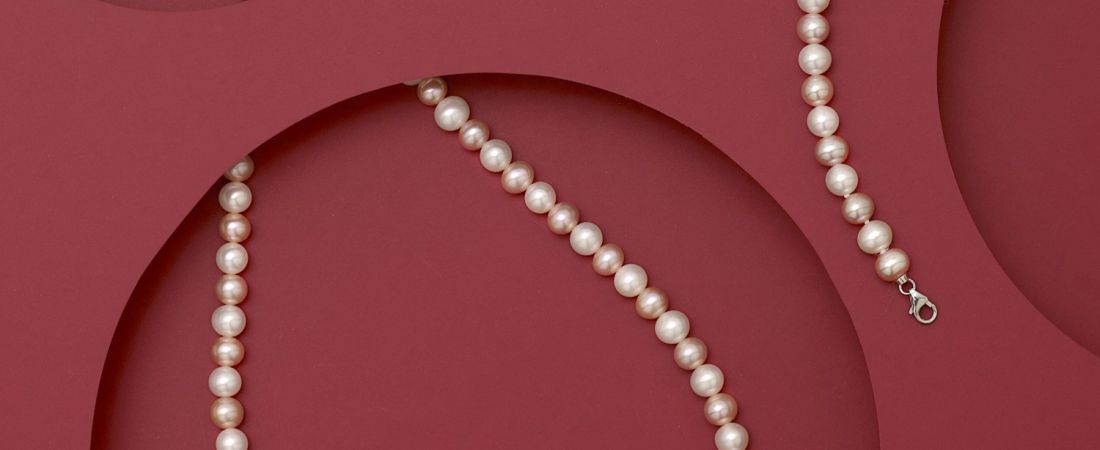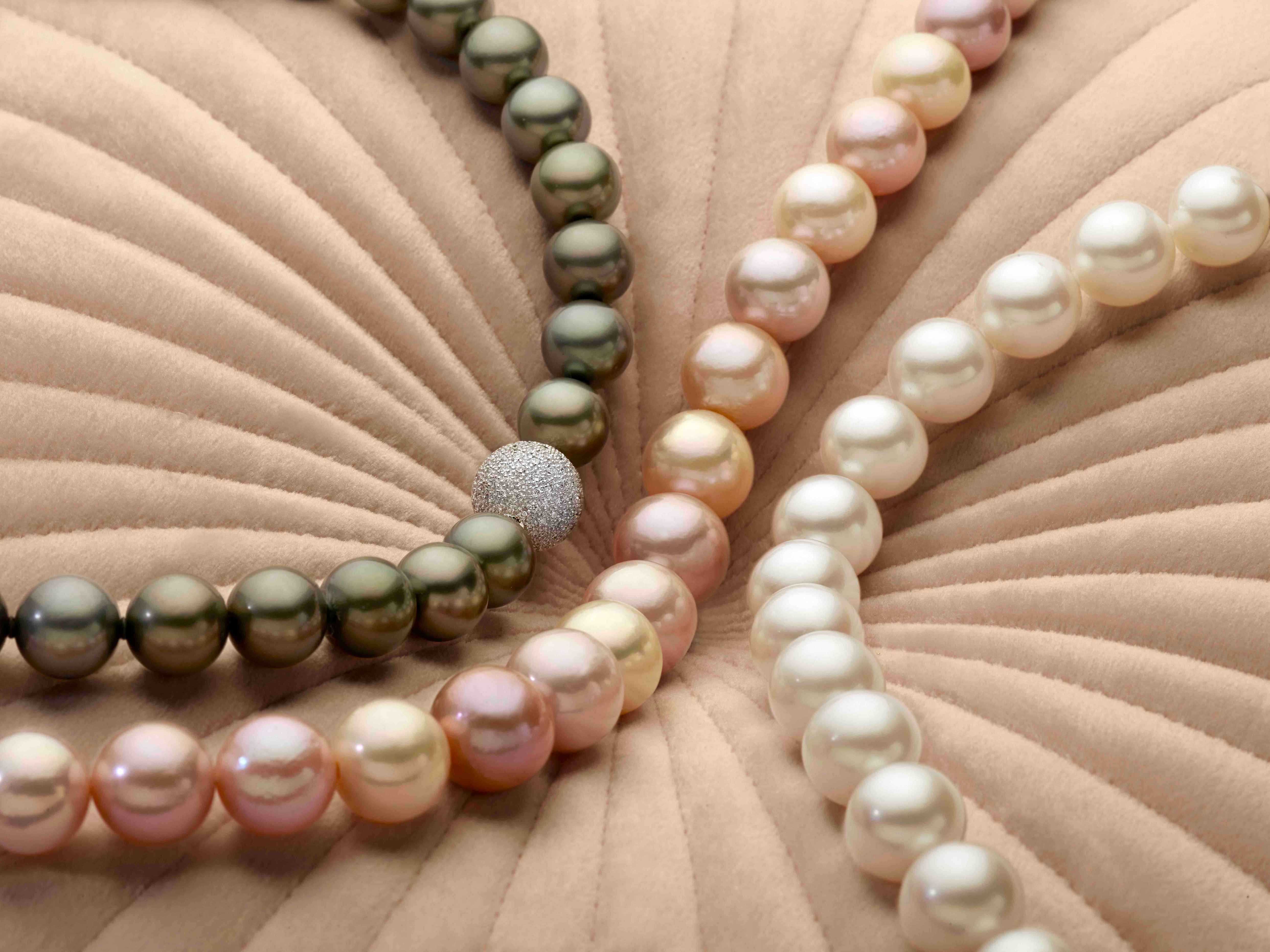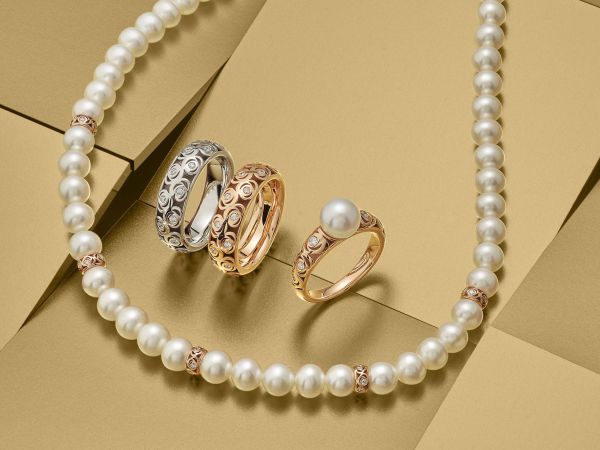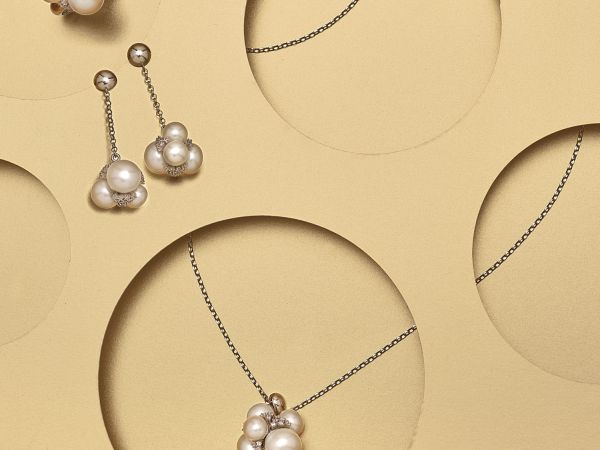Types of Pearls
Cultured pearls
Those pearls whose formation, inside the mollusc, is entirely or partially caused by human intervention, are defined as cultured or cultivated.
Man therefore, and not nature, creates the indispensable conditions for the formation of the pearl which, however, once the process is started, grows naturally.
There are in nature different types of oysters or molluscs capable of creating pearls according to the process described.
It is based on the type of oyster that pearls of more or less spherical shape and different colours are formed, from the most common white to pink, purple, gray, cream and black pearls. The oysters that generate the latter colours are very delicate and often die in an attempt to generate them. For this reason, unlike all the others, they are much rarer and, above all, expensive.
The pearls, in addition to being distinguished by colour and shape, are also diversified by the type of origin. In fact, there are those of fresh water and those of salt water.


-
Freshwater Pearls
These pearls are commonly known as "freshwater pearls" because they are produced almost exclusively from freshwater molluscs.
The main crops are in China and are the most widespread in the world. Thanks to the wide range of colours, the charming character and the attractive price, they are loved as much by designers as by the people who choose to wear them.
They are distinguished by brightness, and have a wide variety of sizes and colours. -
Akoya Pearls
Also known as Japanese pearls, they are renowned for their quality and beauty. The colour is typically white, pink, cream and with various shades. On the other hand, gray pearls are very rare.
You can find many shapes: pear, teardrop, baroque, ovaloid, spherical. -
South Sea Pearls
Large saltwater cultured pearls, produced in the South Pacific and Australia.
They are distinguished from the Japanese pearls by their large size and are basically divided into white pearls and black pearls with a great variety of colour shades in both cases.
The classification of pearls
-
Shine
The degree of lustre is one of the most important determinants of the quality of the pearl. The same luminosity gives it those particular reflections of light, called the orient of the pearl, a sparkle that can be observed when it is placed in shadow. The more intense the reflection of the light on the pearl, the more the lustre will be exceptional.
-
Surface
Pearls can have a surface with irregularities due to natural causes (eg pitting, scratches, protuberances ...) It is therefore said that the surface is clean if free from irregularities or more or less significant signs / defects.
-
Shape
There are three categories of shapes, the spherical, the symmetrical, and the baroque which are flanked by a whole series of intermediate definitions relating to the sphericity of the pearl. The rarest and most valued is the spherical or round pearl.
-
Colour
This requirement is evaluated according to the type of pearl (Freshwater, Akoya, South Sea). When creating a jewel, it is important to ensure uniformity of colour between the pearls used.
-
Size
To determine the size of the pearls, a 3-point precision gauge is used and the average is calculated. All other factors being equal (shape, lustre, surface), larger diameters considerably increase the value of the pearls.
-
Shine
The degree of lustre is one of the most important determinants of the quality of the pearl. The same luminosity gives it those particular reflections of light, called the orient of the pearl, a sparkle that can be observed when it is placed in shadow. The more intense the reflection of the light on the pearl, the more the lustre will be exceptional.
-
Surface
Pearls can have a surface with irregularities due to natural causes (eg pitting, scratches, protuberances ...) It is therefore said that the surface is clean if free from irregularities or more or less significant signs / defects.
-
Shape
There are three categories of shapes, the spherical, the symmetrical, and the baroque which are flanked by a whole series of intermediate definitions relating to the sphericity of the pearl. The rarest and most valued is the spherical or round pearl.
-
Colour
This requirement is evaluated according to the type of pearl (Freshwater, Akoya, South Sea). When creating a jewel, it is important to ensure uniformity of colour between the pearls used.
-
Size
To determine the size of the pearls, a 3-point precision gauge is used and the average is calculated. All other factors being equal (shape, lustre, surface), larger diameters considerably increase the value of the pearls.
How to store pearls
Being organic in nature, pearls may show signs of deterioration over time that cause the loss of the characteristic orient due to dehydration or the dissolution of calcium carbonate.
The main causes are due to the high degree of acidity of the transpiration of the skin or to particular ingredients contained in cosmetics. Acid substances penetrate inside the pearls through the thread, which is therefore good to replace periodically.
Conchiolin, which offers some protection from acids, sometimes tends to deteriorate over time. The oldest pearls often appear dark because the splendour can gradually decrease and, over the centuries, the pearls themselves can disintegrate.
It must be said, however, that good care of pearls keeps their splendour unaltered for a very long time. Just apply some basic rules.
To clean them it is advisable to immerse them in warm water with a little neutral soap and then rub them gently with deerskin or velvet moistened with vegetable oil or lanolin.
Before storing them, it is best to always clean them with a soft cloth and, at regular times, rub them with a cloth soaked in sandalwood oil, to avoid dehydration and fracturing.
When not wearing pearls, they should be left in a silk lined box. The thread of natural pearl necklaces must also be silk.
Discover all our jewelry with pearls
Iscriviti alla nostra Newsletter
DIAMONDS
STORE LOCATOR
CUSTOMER SERVICE
©2023 World Diamond Group S.p.A. All rights reserved | Powered by Web Surfers | Cookie Policy | Privacy Policy
Viale dell'Industria, 14 - 36100 - Vicenza (ITALY) | P.IVA IT02840560243 - REA 279105 - C.i.v. € 5.000.000,00






